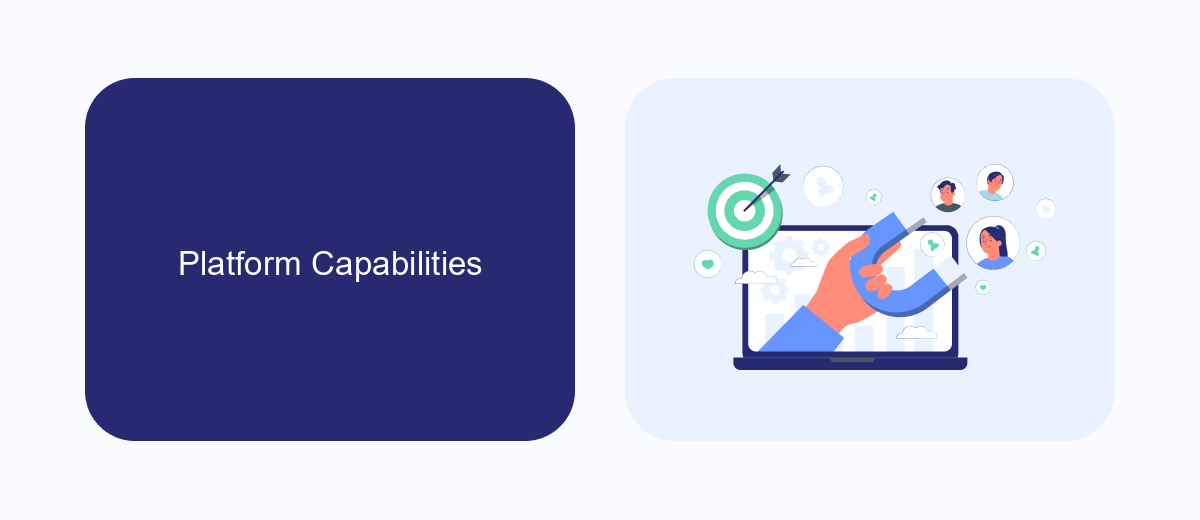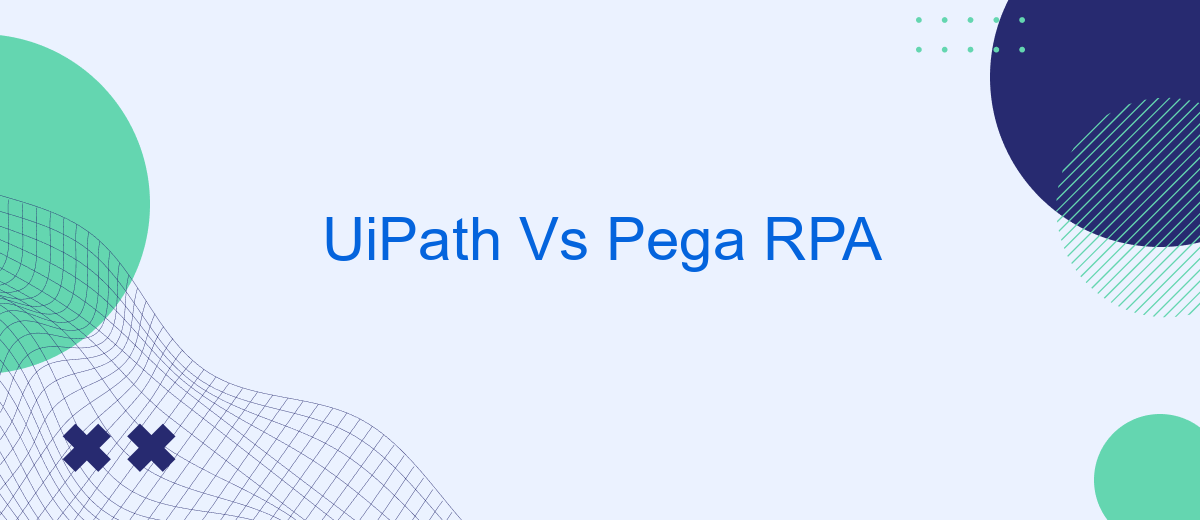In the rapidly evolving world of Robotic Process Automation (RPA), choosing the right platform is crucial for business efficiency. UiPath and Pega are two leading contenders, each offering unique features and benefits. This article delves into a comparative analysis of UiPath and Pega, exploring their strengths, weaknesses, and suitability for various business needs.
Introduction
In the rapidly evolving landscape of robotic process automation (RPA), businesses are increasingly seeking efficient solutions to streamline their operations. Two prominent players in this field are UiPath and Pega RPA, each offering unique capabilities and benefits. Understanding the differences and advantages of these platforms can help organizations make informed decisions to optimize their processes.
- UiPath: Known for its user-friendly interface and extensive integration capabilities.
- Pega RPA: Renowned for its strong case management and scalability features.
- SaveMyLeads: Facilitates seamless integration between various services, enhancing automation workflows.
Choosing between UiPath and Pega RPA depends on specific business needs, such as ease of use, scalability, and integration requirements. By leveraging tools like SaveMyLeads, companies can further enhance their RPA implementations, ensuring smooth data flow and efficient process automation. This article delves into the comparative analysis of UiPath and Pega RPA, providing insights to help businesses decide the best fit for their automation journey.
Platform Capabilities

UiPath and Pega RPA offer robust platform capabilities tailored to diverse automation needs. UiPath excels with its user-friendly interface and extensive activity library, enabling developers to create complex workflows effortlessly. Its integration capabilities are particularly noteworthy, supporting a wide range of applications and services to streamline processes. For instance, integrating with SaveMyLeads allows businesses to automate lead management efficiently, ensuring seamless data flow between various marketing and sales platforms.
Pega RPA, on the other hand, distinguishes itself with its strong focus on end-to-end automation and case management. It provides a unified platform that combines business process management (BPM) with robotic automation, facilitating comprehensive workflow automation. Pega's adaptive analytics and AI-driven decision-making capabilities empower organizations to optimize their operations dynamically. While Pega also supports integrations, its strength lies in its ability to handle complex, multi-step processes within a single environment, making it ideal for large-scale enterprise automation projects.
Ease of Use

When comparing the ease of use between UiPath and Pega RPA, both platforms offer intuitive interfaces, but there are notable differences that may influence your choice. UiPath is known for its user-friendly design, making it accessible even for those with minimal technical expertise. On the other hand, Pega RPA provides a more robust environment tailored for users with some background in process automation.
- UiPath: Offers a drag-and-drop interface, extensive documentation, and community support, making it easier for beginners to get started.
- Pega RPA: Features a more complex interface that may require additional training but provides powerful tools for advanced users.
- Integration: Both platforms support seamless integration with various services. Tools like SaveMyLeads can simplify the process by automating lead management and enhancing workflow efficiency.
Ultimately, the choice between UiPath and Pega RPA will depend on your team's technical expertise and specific automation needs. UiPath may be more suitable for those seeking a straightforward, easy-to-use solution, while Pega RPA is ideal for users looking for advanced capabilities and customization options.
Pricing and Licensing

When comparing UiPath and Pega RPA in terms of pricing and licensing, it's essential to consider the different models and flexibility each platform offers. UiPath typically operates on a subscription-based model, providing various tiers depending on the scale and complexity of your automation needs. This allows businesses to start small and scale up as needed.
Pega RPA, on the other hand, often includes RPA capabilities as part of its broader BPM (Business Process Management) suite. This might make it more cost-effective for organizations already using Pega's BPM solutions, but it could be more expensive for those only looking for RPA functionalities.
- UiPath: Subscription-based pricing with multiple tiers.
- Pega RPA: Often bundled with Pega BPM, which could affect cost.
- SaveMyLeads: Provides integration services that can streamline your automation setup.
Choosing between UiPath and Pega RPA will largely depend on your existing infrastructure and specific needs. If you are looking for a dedicated RPA tool with flexible pricing, UiPath might be the better option. However, if you are already leveraging Pega's BPM suite, integrating RPA through Pega could offer a more seamless and potentially cost-effective solution.
Conclusion
In conclusion, both UiPath and Pega RPA offer robust solutions for automating business processes, each with its own strengths and weaknesses. UiPath excels in its user-friendly interface, extensive community support, and a wide range of integrations, making it a preferred choice for many organizations looking to streamline their operations. On the other hand, Pega RPA stands out with its strong focus on end-to-end automation and seamless integration with Pega's BPM suite, which can be particularly beneficial for businesses already invested in Pega's ecosystem.
Ultimately, the choice between UiPath and Pega RPA should be guided by the specific needs and existing infrastructure of your organization. For those requiring simplified integration with various services, tools like SaveMyLeads can further enhance the capabilities of these platforms by automating lead data transfers and other repetitive tasks. By carefully evaluating your business requirements and leveraging the right tools, you can achieve significant efficiency gains and drive digital transformation effectively.
FAQ
What are the main differences between UiPath and Pega RPA?
Which platform is more suitable for large-scale enterprise automation?
How do UiPath and Pega RPA handle integration with other systems?
What are the licensing and cost considerations for UiPath and Pega RPA?
Which platform offers better support and community resources?
Don't waste another minute manually transferring leads from Facebook to other systems. SaveMyLeads is a simple and effective tool that will allow you to automate this process so that you don't have to spend time on the routine. Try SaveMyLeads features, make sure that this tool will relieve your employees and after 5 minutes of settings your business will start working faster.
